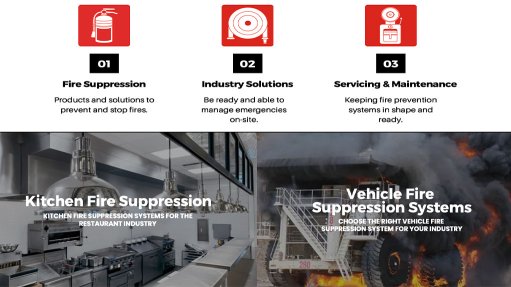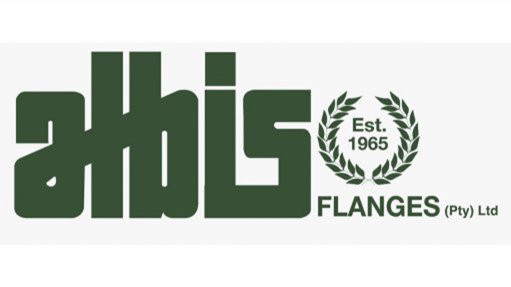Tariff determination process
The South African Revenue Service (Sars) on October 27 presented what it called “a comprehensive tariff determination webinar” to educate traders and travellers and increase their compliance with customs and excise procedures. The revenue service said the aim of the webinar was to provide clarity on the process of tariff determination by equipping taxpayers, traders and travellers with the relevant information and insights.
Should you be interested in viewing the webinar, you can copy the YouTube link, https://youtu.be/TtXDAI9WMes, into your browser. If you have questions about tariff determination, then send an email enquiry to: Tariffquestions@sars.gov.za.
An alternative approach would be to download a copy of Sars’ ‘Customs External Policy Tariff Classification’, the latest version of which was published on January 28, 2021. As the summary of the document reminds us, (i) the classification of imported or exported goods must be done according to Section 47(9) of the Customs and Excise Act, 1964 (Payment of duty and rate of duty applicable) and the General Rules for the Interpretation of the Harmonised System; (ii) clients intending to export or import must, in the event that they are unable to classify the goods, apply for a tariff determination on the intended imports to Customs; and (iii) all imported and exported goods must be declared on a Customs clearance declaration with an appropriate tariff heading.
You may recall that tariff classification is one of the three cornerstones of customs and excise, the other two being origin and customs valuation.
Have you ever wondered as to when classification was first recorded in international trade? The first reference dates back to 199 BC, having been established by the Roman Customs Administration. As for modern- day classification, it started at the ninth International Statistical Congresses, held between 1853 and 1876, where the idea of an international statistical nomenclature was mooted. At the 1889 International Commercial Congress, the question was asked: Would it not be in the interest of all nations to adopt in their Customs tariffs and in their official statistics comparable classifications and uniform vocabularies? The compilation of a uniform vocabulary for goods proved to be a challenging endeavour. In 1931, the League of Nations’ Sub-Committee of Experts for the Unification of Customs Tariff Nomenclature, completed the Draft Customs Nomenclature, commonly referred to as the Geneva Nomenclature. A revised version was issued in 1937, but the process was halted by World War II and was revived only after the war.
On December 15, 1950, the end of that Brussels Convention on Nomenclature for the Classification of Goods in Customs Tariffs (Nomenclature) was released; it came into force on September 11, 1959. During this time, the Customs Cooperation Council, later renamed the World Customs Organisation, came into being on January 26, 1953. The Nomenclature was initially known as the Brussels Tariff Nomenclature but was renamed the Customs Cooperation Council Nomenclature (CCCN) in 1974. The CCCN was updated on January 1, 1965, as well as on January 1, 1972, and on January 1, 1978. On January 1, 1988, the Harmonised Commodity Description and Coding System, generally referred to as Harmonised System (HS), was introduced. Every five years since January 1, 1988, a revised HS iteration is introduced, with the most recent being HS2022.
If you are a regular trader or traveller and want to not only mitigate your customs duty liability risk but also have legal certainty, it will be worthwhile to consider applying for a Binding Tariff Ruling, also known as a Binding Tariff Determination. Additionally, or alternatively, you can apply for an Advance Classification Ruling.
Contrary to popular wisdom, tariff classification is an element in the Customs process that can be managed – it shouldn’t be left to chance.
Article Enquiry
Email Article
Save Article
Feedback
To advertise email advertising@creamermedia.co.za or click here
Comments
Press Office
Announcements
What's On
Subscribe to improve your user experience...
Option 1 (equivalent of R125 a month):
Receive a weekly copy of Creamer Media's Engineering News & Mining Weekly magazine
(print copy for those in South Africa and e-magazine for those outside of South Africa)
Receive daily email newsletters
Access to full search results
Access archive of magazine back copies
Access to Projects in Progress
Access to ONE Research Report of your choice in PDF format
Option 2 (equivalent of R375 a month):
All benefits from Option 1
PLUS
Access to Creamer Media's Research Channel Africa for ALL Research Reports, in PDF format, on various industrial and mining sectors
including Electricity; Water; Energy Transition; Hydrogen; Roads, Rail and Ports; Coal; Gold; Platinum; Battery Metals; etc.
Already a subscriber?
Forgotten your password?
Receive weekly copy of Creamer Media's Engineering News & Mining Weekly magazine (print copy for those in South Africa and e-magazine for those outside of South Africa)
➕
Recieve daily email newsletters
➕
Access to full search results
➕
Access archive of magazine back copies
➕
Access to Projects in Progress
➕
Access to ONE Research Report of your choice in PDF format
RESEARCH CHANNEL AFRICA
R4500 (equivalent of R375 a month)
SUBSCRIBEAll benefits from Option 1
➕
Access to Creamer Media's Research Channel Africa for ALL Research Reports on various industrial and mining sectors, in PDF format, including on:
Electricity
➕
Water
➕
Energy Transition
➕
Hydrogen
➕
Roads, Rail and Ports
➕
Coal
➕
Gold
➕
Platinum
➕
Battery Metals
➕
etc.
Receive all benefits from Option 1 or Option 2 delivered to numerous people at your company
➕
Multiple User names and Passwords for simultaneous log-ins
➕
Intranet integration access to all in your organisation














